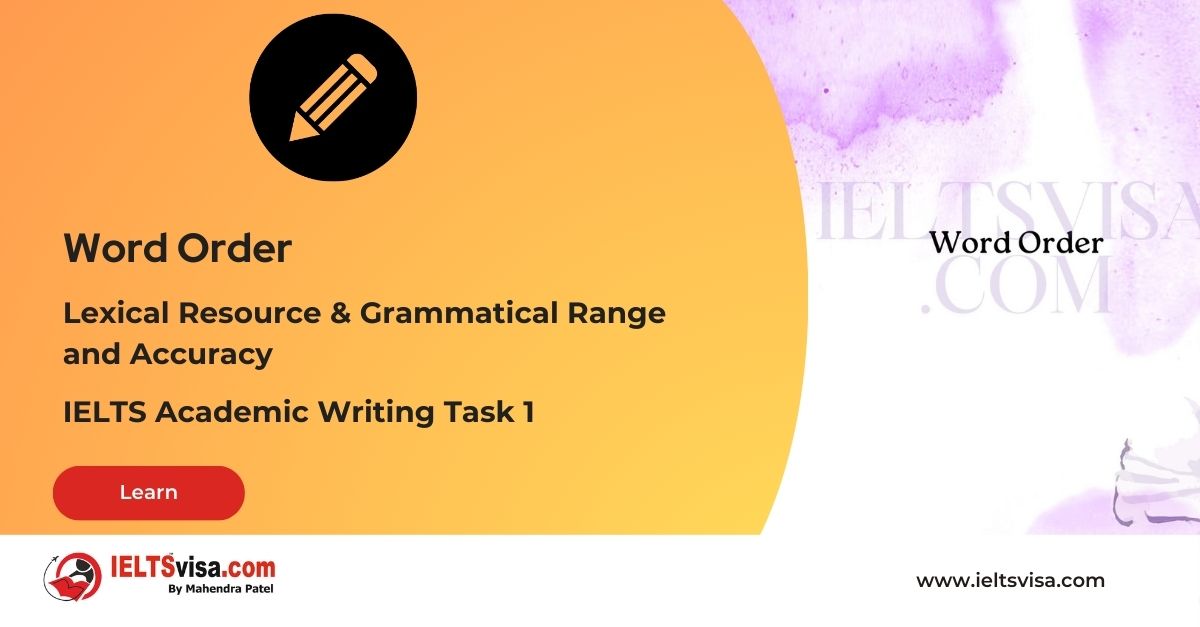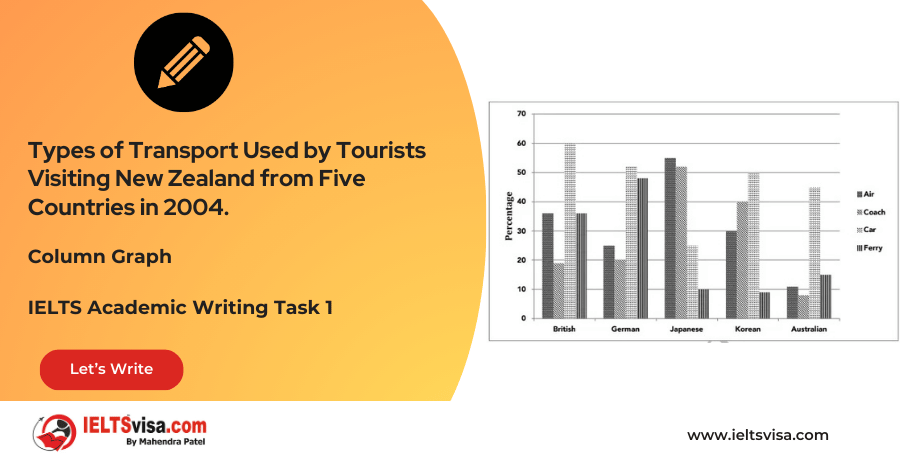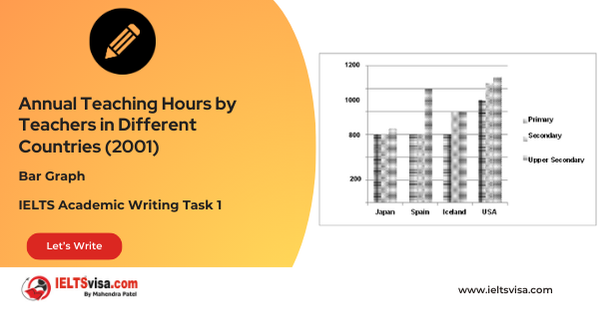Word Order
Lexical Resource & Grammatical Range and AccuracyIELTS Academic Writing Task 1

In the IELTS Academic Writing Task 1, demonstrating strong Lexical Resource and Grammatical Range and Accuracy is crucial for achieving a high score.
One crucial aspect to consider is the correct word order in sentences. Word order refers to arranging words in a sentence to convey meaning accurately and effectively.
In this article, we will explore the importance of using the correct word order in Task 1, accompanied by examples and answers to help you understand and apply this skill proficiently.
1. Subject-Verb-Object (SVO) Order:
In English, the most common word order is Subject-Verb-Object (SVO). This means the subject usually comes first, followed by the verb and the object. Following this structure ensures clarity and comprehension.
Example:
Original Sentence: She read a book.
Revised Sentence: She read a book.
In the revised sentence, the subject “she” comes before the verb “read” and the object “a book,” maintaining the SVO order.
2. Adjective Order:
When using multiple adjectives to describe a noun, there is a specific order in which they should appear. The order is generally opinion, size, age, shape, colour, origin, material, and purpose.
Example:
Original Sentence: He bought a red big car.
Revised Sentence: He bought a big red car.
The revised sentence’s adjective order is corrected to “big red” instead of “red big” to follow the preferred sequence.
3. Adverb Placement:
Adverbs typically modify verbs, adjectives, or other adverbs. They are usually placed after the verb or at the beginning or end of a sentence. Placing adverbs correctly helps convey the intended meaning.
Example:
Original Sentence: She quickly ran to the store.
Revised Sentence: She ran quickly to the store.
In the revised sentence, the adverb “quickly” is placed after the verb “ran” to indicate how she ran.
4. Indirect and Direct Objects:
In sentences with both indirect and direct objects, the word order is important to ensure clarity. The indirect object usually comes before the direct object.
Example:
Original Sentence: He gave his friend a gift.
Revised Sentence: He gave a gift to his friend.
The revised sentence rearranges the word order to place the indirect object “his friend” before the direct object “a gift.”
Understanding and applying the correct word order in your writing is essential for conveying your ideas clearly and effectively. Practice constructing sentences using the appropriate word order based on the intended meaning.
Pay attention to the placement of adjectives, adverbs, and objects to ensure accuracy and coherence. Seeking feedback from others and utilizing grammar resources can further assist you in improving your Lexical Resource and Grammatical Range and Accuracy.
You will excel in your IELTS examination with consistent practice and attention to detail.
Good Luck!




Our Books
Master IELTS Speaking Part 1
IELTS Writing Task 1 Book
IELTS Writing Task 2 Book
Practice IELTS Other Modules
IELTS Listening
The IELTS Listening test assesses how well you can understand spoken English in various contexts. It lasts about 30 minutes and is divided into four sections with a total of 40 questions. The listening tasks become increasingly difficult as the test progresses.
IELTS Academic Reading
The IELTS Academic Reading section assesses your ability to understand and interpret a variety of texts in academic settings. It is designed to evaluate a range of reading skills, including skimming for gist, reading for main ideas, reading for detail, understanding inferences, and recognizing a writer's opinions and arguments.
IELTS Speaking
The IELTS Speaking test assesses your ability to communicate in English on everyday topics. It lasts 11-14 minutes and consists of three parts: introduction, cue card, and a discussion based on the cue card topic.
IELTS General Reading
IELTS General Reading tests your ability to understand and interpret various types of texts. Here are some key areas and types of content you can expect to encounter in the reading section, along with tips for effective preparation.
IELTS Academic Writing Task 1
In IELTS Academic Writing Task 1, you are presented with a visual representation of information, such as graphs, charts, tables, or diagrams, and you are required to summarize, compare, or explain the data in your own words.
IELTS General Writing Task 1
In IELTS General Writing Task 1, you are required to write a letter based on a given situation. The letter can be formal, semi-formal, or informal, depending on the prompt. Here’s a breakdown of the key components to include in your letter
IELTS Academic Writing Task 2
In IELTS Academic Writing Task 2, you are required to write an essay in response to a question or topic. Here’s a guide to help you understand the essential elements of this task
IELTS Exam Tips
To succeed in the IELTS exam, practice regularly, familiarize yourself with the test format, improve your vocabulary, develop time management skills, and take mock tests to build confidence.
Grammer for IELTS
Grammar is the foundation of effective communication in English. Understanding tense usage, subject-verb agreement, and sentence structure enhances clarity and coherence in writing and speaking.
Vocabulary for IELTS
Vocabulary plays a crucial role in the IELTS (International English Language Testing System) exam, especially in the Speaking and Writing sections. Here’s an overview of why vocabulary is important and how it impacts your performance
RECENT IELTS SAMPLES QUESTIONS AND ANSWERS
Task 1 – Diagram – A conference hall built in 1981 and planned for 2020
20:00 Start Pause Stop [df_adh_heading title_infix="IELTS Writing Task 1 Question" use_divider="on"...
Task 1 – Table – The percentages of homeschooled students in Some Country in 1999-2004.
20:00 Start Pause Stop [df_adh_heading title_infix="IELTS Writing Task 1 Question" use_divider="on"...
Task 1 – Table – For a university tutor describing the information shown.
20:00 Start Pause Stop [df_adh_heading title_infix="IELTS Writing Task 1 Question" use_divider="on"...
Task 1 – Bar-Charts – The way people of Some country invested their money during the years 2001 – 2006
20:00 Start Pause Stop [df_adh_heading title_infix="IELTS Writing Task 1 Question" use_divider="on"...
Task 1 – Diagram – Rainwater Harvesting and Conversion to Drinking Water in an Australian Town.
20:00 Start Pause Stop [df_adh_heading title_infix="IELTS Writing Task 1 Question" use_divider="on"...
Task 1 – Column graph – Percentage of Young People Enrolled in Universities in 2000 and 2007.
20:00 Start Pause Stop [df_adh_heading title_infix="IELTS Writing Task 1 Question" use_divider="on"...
Task 1 – Bar Graph – Annual Teaching Hours by Teachers in Different Countries (2001)
20:00 Start Pause Stop [df_adh_heading title_infix="IELTS Writing Task 1 Question" use_divider="on"...
Task 1 – Pie Charts – Coffee Production, Consumption, and Profit Distribution Worldwide
20:00 Start Pause Stop [df_adh_heading title_infix="IELTS Writing Task 1 Question" use_divider="on"...
Task 1 – Column graph – Types of Transport Used by Tourists Visiting New Zealand from Five Countries in 2004.
20:00 Start Pause Stop [df_adh_heading title_infix="IELTS Writing Task 1 Question" use_divider="on"...













